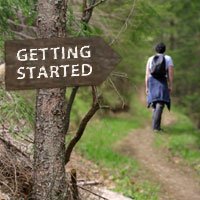60-day returns • free shipping on USA orders $129+
“So they just send you the books, and you do them at home?”
I still remember the puzzled lady at the grocery store trying to wrap her mind around “homeschooling.” I’m afraid she would have been even more puzzled had I told her that I knew of at least five different approaches to homeschooling.
It’s not a one-size-fits-all process, like it is in traditional schools and classrooms. That’s how the lady at the grocery store was thinking of it.
One of the great benefits of homeschooling is that you can select the methods and materials that best fit you and your children. You have choices!
Your Choice
Fifteen years ago, when I started homeschooling, an experienced mom shared with me these five approaches so I could make an informed choice. Now I share them with you so you can find the approach that will work best for your family.
- Traditional—Uses textbooks for the various subjects. Assigns a chapter in the textbook to be read and questions to answer from the content. Uses workbooks with fill-in-the-blank and multiple-choice questions. (We often refer to it as “school in a box.”)
- Unit Studies—Takes a theme or topic and incorporates all the school subjects (Language Arts, History, Science, Music, Art, etc.) into that topic. For example, when you study Ancient Egypt, you read books about Egypt (history), make a salt dough map of Egypt (geography), explore how they irrigated their farm land from the Nile (science), read a historical fiction book set in Ancient Egypt (literature), build sugar cube pyramids (art), learn how to spell “pyramid” (language arts), etc.
- Unschooling—Basically goes with the interests of the children. No set curriculum. If a child is interested in butterflies, you research and learn about them until the child is satisfied. If he develops an interest in racecars, you give him information on racecars.
- Classical—Children are taught in three stages, called the Trivium. The Grammar Stage (ages 6-10) focuses on absorbing information and memorizing the rules of phonics, spelling, grammar, foreign language, history, science, math, etc. The Dialectic Stage (ages 10–12) emphasizes logical discussion, debate, drawing correct conclusions, Algebra, thesis writing, and determining the why’s behind the information. The Rhetoric Stage (ages 13–18) continues the systematic, rigorous studies and seeks to develop a clear, forceful, and persuasive use of language.
- Charlotte Mason—Based on the educational writings of Charlotte Mason, a turn-of-the-century British educator. She believed in respecting children as persons, in giving them all a broad education by using a generous curriculum, and in allowing them to read “living” books instead of what she called “twaddle.” These tenets are further developed in the methods she used. Charlotte’s idea was to “spread a feast” before the child and let him digest what was appropriate for him at that time. She sought to nurture a love for learning, not just present a body of information.
My Favorite
So what was your first reaction when you read the description of each approach? When I first heard those five approaches explained, my heart resonated with the Charlotte Mason Method right away. I knew that was the approach that I could teach wholeheartedly and enjoy. And that was the approach that would shape my children into the kind of people I hoped they would become.
Why? I knew I wanted to use living books instead of textbooks. I knew I wanted to cultivate a love of learning in my children, rather than the cram-the-facts-just-long-enough-to-pass-the-test kind of education that I received.
I wanted my children to receive a broad education, to enjoy art and music and nature study as a natural part of their growing years. I wanted to surround them with beautiful and interesting ideas that would feed their souls and motivate them to learn.
I wanted to use teaching methods that made common sense and respected each child as a person. And I wanted to give them a carefully-thought-through curriculum that would not only educate them well, but also teach them how to keep learning for the rest of their lives, to self-educate.
Is all of that possible in one approach to homeschooling? Yes.
Does it require special training? No. Just a willingness to discard your baggage, step outside the box, and enjoy the freedom of fresh ideas.
How? The rest of this series will explain the details. Stay tuned.
More Information on the Five Approaches
Not too long ago we discussed the different approaches to homeschool and how they compared to the Charlotte Mason Method. Check out our Homeschool Approaches series for more on the similarities and differences.


Helpful and succinct- even for a mom going into her fourth year of homeschooling! I agree, Charlotte Mason’s approach just rings true with me as well. I really appreciate the posts written here. They are informative and encouraging. Thank you.
Hello, Sonya, I just translated this post into Spanish (with your permission, for those who wonder). It was wonderful reading this to translate, and getting tips on how to help others. I love the Charlotte Mason method, even more now that you are around to extract her living ideas. You have a knack for explaining things clearly. I wrote in a note after my translation that you were a great living person to help us get near to Charlotte Mason’s original intent.